The Accord is in trouble.
So far this year – and the year is almost over – Honda has only sold about 165,000 of them. That’s down from more than 320,000 of them back in 2017, which was the year just before the Accord was completely redesigned.
In other words, Honda has only sold about half as many of the new Accord this year as it sold of the final year of the old Accord.
This bad news can’t be laid at the feet of this year being a bad year for everyone – bad as it has been. Because the Accord didn’t do very well the previous year, either. In 2019, Honda only sold 267,5667 Accords – about 50,000 fewer than it sold of the old model 2017s.
So what’s the matter with the new Accord?
Nothing that a V6 – or a manual transmission couldn’t fix.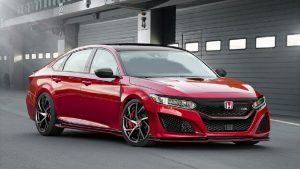
Unfortunately, neither of those are available in the Accord anymore – which may account for it not selling as well as the old Accord . . .
Which offered both of those things.
But there might something else on deck to compensate . . .
What it Is
The Accord was one of the best-selling mid-sized family sedans in America, vying for the title with the Toyota Camry, its primary rival.
Historically, the Honda offered more personality and driving fun than the Camry and others in the segment because it was available with both a V6 and a manual transmission . . . and because you could put those two things together.
While the Camry was available with a V6 – and still is – the big engine was (and is) only paired with an automatic transmission.
But when the Accord was redesigned for the 2018 model year, the previously available 3.5 liter V6 no longer was. A less powerful turbocharged 2.0 liter turbocharged four cylinder replaced it as the Accord’s top-dog engine . . . but you could still get it with a manual transmission.
That option’s off the table now, too.
For 2021, the 2.0 liter turbo four is still the top-dog Accord engine – but it’s automatically paired with a ten-speed automatic. The standard engine is an even smaller 1.5 liter turbocharged four – paired with a continuously variable (CVT) automatic.
Last year, it was available with a manual, too.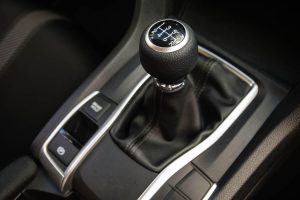
It no longer is, either.
Prices begin at $24,770 for the base LX trim with the 1.5 liter/CVT combo. A Sport trim with the larger 2.0 liter engine and the ten speed automatic stickers for $31,910.
A top-of-the-line Touring trim with the same drivetrain lists for $36,700.
All Accords are front-wheel-drive.
What’s New
In addition to slight exterior and interior styling tweaks, all 2021 Accords, including the base LX, now come standard with an 8-inch “floating” tablet-style LCD touchscreen. EX-L and Touring trims come standard with a wireless cell phone charging pad.
What’s Good
Standard 1.5 liter engine is capable of almost 40 MPG on the highway, exceptional for a mid-sized non-hybrid sedan.
More rearseat legroom (40.4 inches) than rivals like the Camry.
Sport still comes with sporty (19 inch) wheels and short-sidewall tires.
What’s Not So Good
No more manual option – with either engine.
Not much trunk relative to crossovers.
Not as much personality as it used to have.
The Accord’s standard 1.5 liter engine makes 192 horsepower and exactly the same amount of torque (192 ft.-lbs.) at just 1,600 RPM. It is paired exclusively with a continuously variable (CVT) automatic transmission.
Last year, you could opt for a six-speed manual transmission – a type of transmission no other car in this class offered. Most buyers went for the automatic, but the availability of the manual set the Accord apart from the others in the class.
So why is it no longer offered?
In two words – the government.
Honda, along with every other car company, is under great pressure to increase the mileage of the cars it sells in order to avoid the fines it would otherwise have to pass on to buyers for not meeting federal fuel economy standards. The 2020 Accord with the 1.5 liter engine and the six-speed manual transmission carried an EPA rating of 26 city, 35 highway – as opposed to 30 city, 38 highway for the ’21 with the same engine and the CVT automatic.
That 4 MPG or so difference may not seem like a lot – and it isn’t, especially given that the cost of gas is still quite low – but it makes a lot of difference in terms of complying with the MPG “fleet averages” demanded by the federal government and the fines imposed – and passed along – for not complying with them.
The pressure to comply is so great that even the Sport version of the Accord is also now automatic only.
But the good news is the 2.0 liter engine comes with a 10 speed automatic rather than the CVT. Shifting through the gears feels (and sounds) better than varying through the ranges, as CVTs do.
Also, the 2.0 liter turbo four – which makes 252 horsepower – maintains the performance of the now-absent 3.5 liter V6, despite the larger engine making 278 horsepower. The ’21 Accord 2.0 with the ten speed gets to 60 in about 6.3 seconds, about the same as the old Accord with the V6 and the manual six-speed.
It manages that trick because the 2.0 turbo four makes significantly more torque – and much sooner: 273 ft.-lbs. at just 1,500 RPM vs. 252 ft.-lbs. at a much higher 4,900 RPM.
The torque – which is an application of leverage – is what gets the new turbo four Honda to 60 as quickly as the old V6 Honda.
Interestingly, the gas mileage difference is essentially nil as well.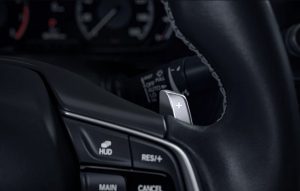
The 2.0 liter four with the ten speed rates 22 city, 32 highway; the old V6 Accord with the six-speed manual rated 21 city, 33 highway.
So what accounts for the ditching of the V6 and the six-speed, if not gas mileage?
Emissions.
Not of the bad stuff that fouls the air. Those emissions have been culled to practically nil. When you hear about “emissions” nowadays, what it is meant are emissions of the inert gas, carbon dioxide – which doesn’t cause or contribute to smog/respiratory problems but is claimed to contribute to “climate change.” A 3.5 liter V6 “emits” more of this gas than a 2.0 liter four and that is important as far as complying with the latest – and pending – federal “emissions” standards.
That’s why the six was nixed.
As far as the manual with the four, it cost Honda about 2 MPG overall on government fuel efficiency tests vs. the 10-speed automatic and that’s why no soup for you.
The 2.0 Accord is just as quick as the old V6 Accord but it’s not the same – in a way that’s hard to quantify but no less real for being so.
Honda makes one of the best V6 engines, if you like an engine with personality as well as durability. It revs – and it lasts. There are so many 20-year-old V6 Accords still in use today that it’s hard to avoid seeing them, unless you close your eyes.
The turbo four feels stronger in traffic, coming off the line – because it is. That swell of turbocharged torque is both pleasant and practical in that this is not an engine that needs to be revved to move you. For people who commute and rarely have the chance to open her up, it is probably a better engine than the old V6, which did its best work when floored the pedal and had the time and space to let it rev to 7,000 RPM before you grabbed the next gear up – which you could do because there was a third pedal to work with.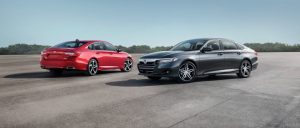
This was fun, especially after a long day at work. A V6/manual Accord was a car you took for a drive when you didn’t need to – just for the fun of it. And yet, it was still just as practical for the drive to work on Monday and to cart the kids home from school, too.
That Accord was a kind of stealth BMW, for two-thirds the price – back when BMWs were still driving machines, at any rate.
Honda’s mistake here is that this Accord is too much like the others in this class, the Camry and the Mazda6 – both of which also are automatic-only (and in the case of the Mazda, also four cylinder only). If anything, the Camry – the car that for decades has been the apotheosis of the Family Car – is now the sportiest car in the class, because it alone still offers a V6 – along with a Nextel Cup-looking body kit and suspension tuning for the TRD version.
If anything, Honda arguably should have doubled-down on the Accord’s sporty bona fides, and not just because it would have maintained separation between it and arch-rival Camry. Sedans – all of them, including the Camry – are losing market share to crossovers because they can never be as practical as a crossover.
So why try?
It is instructive that the only sedan doing well right now is the Dodge Charger – arguably because it does not emphasize practicality and barely gives a flip about gas mileage, either. It comes standard with a big V6 – and offers a huge V8.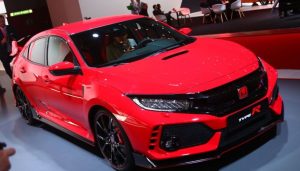
People love it – and they buy it, despite the current Charger being an automotive Aurochs. The 2021 is largely the same car as the 2007, which was the last time Dodge gave it a major makeover.
Because it doesn’t need one.
Because people still want that big rumbly engine – not an engine that’s size-appropriate for a compact economy car. But there may be something coming to address these concerns: A Type R variant of the Accord that definitely ups the ante, visually as well as functionally. It may be available as soon as this summer.
At The Curb
Honda might take it one step farther.
The Accord has the sleek fastback styling of a hatchback; why not make it one?
Instead of a 16.7 cubic foot trunk – which is a good sized trunk for a mid-sized sedan – there’d be twice as much available space, which would make it functionally more competitive with a crossover.
Without being a crossover.
That’s the magic number.
Sedans like the Accord – and the Camry – are having trouble competing with crossovers as family cars because they have trunks and that limits what they can carry, which limits who wants to buy them. If they could be made bigger – full-size, with full-size trunks – they’d probably sell better (see the Charger) but the problem is the government is making it really tough for any car company to sell big cars, which need big engines. Dodge gets away with it because it’s the last of the Mohicans and also because the Charger has been around forever. The tooling costs were probably amortized ten years ago. Pouring millions into R&D’ing a new big car is a hairy prospect given the good odds such cars will be crippled by Green New Deals and such.
But, converting a fastback into a hatchback solves the trunk/space problem without incurring government problems.
The Accord does have second-row room in its favor. The 40.4 inches of legroom back there is two inches more than in the Camry’s backseats (38 inches) and more than in most same-footprint crossovers, too.
The Accord’s trunk is also larger than the Camry’s 15.1 cubic footer and the Mazda6’s 14.7 cubic footer.
There’s a lot to recommend it. It’s just a shame about what’s missing.
The Rest
All trims come with automatic climate control AC – but if you want more than just a four speaker stereo, you’ll have to move to the Sport or higher trims; these come with a much better eight-speaker stereo system – but it’s a roughly $2,500 price bump to go from the LX to the Sport.
A ten-speaker premium system comes standard in EX-L and Touring trims, which also get heaters for the backseats, rain-sensing wipers and a Heads-up Display (HUD).
The Sport comes with a 19-inch wheel/tire package and paddle shifter controls for the automatic transmission.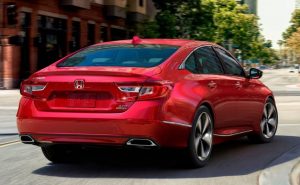
The Bottom Line
The Accord is still a really good car – but that’s just the problem. And not just for the Accord.
It’s still a car.
Making it more competitive with crossovers would probably help a lot. Or just making it more interesting.
Without a clutch pedal, it’s less so.
A V6 would make it more so.
The Type-R tease – if it becomes fact – a lot more so.
. . .
Got a question about cars, Libertarian politics – or anything else? Click on the “ask Eric” link and send ’em in!
If you like what you’ve found here please consider supporting EPautos.
We depend on you to keep the wheels turning!
Our donate button is here.
If you prefer not to use PayPal, our mailing address is:
EPautos
721 Hummingbird Lane SE
Copper Hill, VA 24079
PS: Get an EPautos magnet or sticker or coaster in return for a $20 or more one-time donation or a $10 or more monthly recurring donation. (Please be sure to tell us you want a magnet or sticker or coaster – and also, provide an address, so we know where to mail the thing!)
My latest eBook is also available for your favorite price – free! Click here. If that fails, email me at [email protected] and I will send you a copy directly!




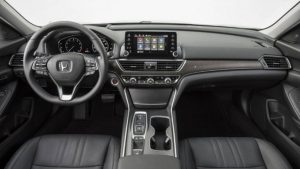
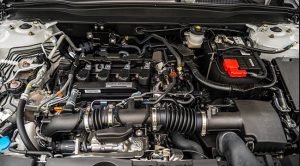
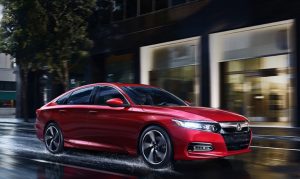
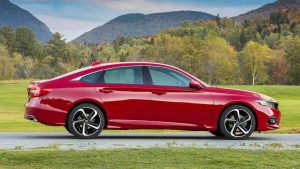
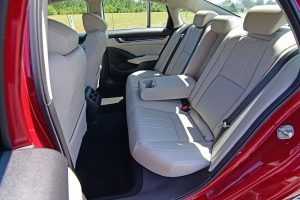








All I know is I drove a ~2003 Honda Accord V6, and that motor was sweet. Smooth, quiet, power. It’s a TRAVESTY they don’t even have their V6 as an option in the Accord anymore. All to save maybe ~1 mpg? That’s just stupid and insane. But this is what you get when evil gremlins are able to control the car industry and they are trying to destroy our world’s vehicles (and other infrastructure as well).
To be fair, their J35 V6 engine is positively *ancient*. I had one in my 2006 Ridgeline and it was an old design even then.
Will they invest in a new more emissions-friendly V6? Perhaps a smaller displacement with turbos bringing back the power that was lost to smaller cylinders, so that you still have the smoothness & refinement of a six relative to a four-banger? Ehh, probably not – they’re likely close to the power that a FWD chassis can handle without 90’s-era torque steer. And their current AWD-on-demand system would wear out clutches super fast.
Indeed, Chip – but “ancient” can be good. The best engines are, arguably, the venerable ones. The ones that have proved their worth over many years. I’d much rather have an “ancient” engine that is known to be durable/reliable (as well as simple) than an unknown “new” engine with no track record and lots of complexity.
morning eric, you say right. I’ve had two 90’s vehicles with better mileage than now and so smooth I was always trying to start them while they were running. I had to look at the tach on the Cutlass and the LS engine both to tell if they were running. The Cutlass got 30 mpg at 70. The LS gets 15.5 in a Z 71 with low gears doing 75-80.
The both have electronic gaffs but nothing severe, mainly just check this or that immediately after servicing this or that. Both have left me walking once each, because of dead batteries that were ancient. The LS went 240,000 miles on the first, original alternator. The Cutlass, with 285,000 miles has never had a water pump and the LS water pump went out right after the alternator.
No worry though, in a few years, you’ll be hard-pressed to buy a new gas vehicle and then you’ll never have a repair again on the electrics, esp if it’s body panels cause you can just buy a new one.
From a reliability standpoint – you’re absolutely not wrong. But when the competition is making more power and getting better fuel economy by using smaller turbocharged engines, the average consumer is going to buy them over the Honda because they have more horsepower and cost less to fill up. (Whether the turbos will outlast the 80-month loan they got on it is a good question)
Speaking of ancient yet reliable engines – I replaced the valve cover gaskets on the 2UZ-FE V8 this summer. There was a small amount of seepage onto the exhaust because the old ones had gotten hard as a rock. The condition of the cams & rockers was excellent – there was some varnish on the driver’s side where the PCV valve is, but otherwise just a nice golden color. 184k miles so far. The GX is overdue for a makeover, but Lexus keeps making them because they sell a steady 6000 of them a year.
Hi Chip,
But they’re actually not! Making more power… the Camry, which of course is the Accord’s historic rival, offers a 300-plus hp V6 and the quickest 0-60 time in the class.
What do Camry sales numbers look like?
I have had several Accords over the years. I shopped around in 2019 and really really did not like the ones with the CVT. I think that is one reason these things don’t sell….I instead bought and Acura TLX with the 4cyl which was priced the same as the equivalent Accord with better power from the 4 and more upscale interior…and no CVT. I am enjoying the car very much and want to keep it a long time as the 2.4 will last a long time.
As far as the stupid SUV obsession of everyone. I really don’t get why everyone thinks they need one. Sire it is fine for some applications, but none that I have driven or owned have handled as well as a car and have not really presented a great deal of utility beyond what is in the sedan I own now. Sure my wife has one in lieu of the minivan….but there is no need for both of us to have one just because we want to keep up with the proverbial Jonses.
One has to wonder, why don’t they offer the Accord with a station wagon body style like they did from 1991-1997? That would solve the issue of “Sedans like the Accord – and the Camry – are having trouble competing with crossovers as family cars because they have trunks and that limits what they can carry, which limits who wants to buy them”
I agree, Dood –
But for some odd reasons, wagons don’t sell well in the United States – though they do in Europe and other markets. I personally love wagons; especially big RWD ones with V8s!
A friend has a 96, good machine and comfortable. The only thing I didn’t like was the 4 with an auto. It buzzed a lot idling and low rpm. A v6 would have been better and got about the same mileage.
The European-spec Accord was the last to offer a wagon. It was briefly sold here under the very last Acura TSX generation, and it was only available with the 2.4 powertrain. Someone on the opposite side of my block actually has one, but they are quite rare in my experience. AFAIK there has never been an Accord wagon with a V6.
I’m pretty much through with honda. I think their relying on perceived quality vs actual quality. Their automatic transmissions suck. Had a 2000 acura tl, 2002 civic manual trans, 2005 odyssey, and now a 2012 ridgeline. Honda has great 4 cylinder motors but their v6 with the cylinder deactivation causes oil starvation and requires special expensive engine mounts with a balancer to stop vibration when the eco mode kicks on. My ridgeline will make a slight vibration when dim let off the gas. That engine mount is 1500 to replace. I also think the should us timing chains instead of belts.
No Eric, the fate of the Accord is because obesity has nearly tripled in the United States over the last fifty years.
A typical fatty finds it immensely easier to flop into an SUV than a sedan.
Hi Clay,
That’s a valid point – and it applies generally. All modern vehicles are obese. Because government has so ordered.
As the owner of a 2012 Accord MANUAL sedan, I was looking forward to the latest Accord when it came out. However, I think many see like I do as just a big Civic (which in essence it is). Being a family car, I love the relatively huge fuel tank of my car (a bit over 17 gallons), the newest version is short about 4 gallons, cutting a huge chunk out of the cruising range (on paper the new car is supposed to be superior, but in real work driving I know that turbo will be spooling a lot and sucking up quite a bit of fuel). The trunk is also an issue. My car swallows my hockey bag, goalie pads, and sticks with a small bit of effort, my bag might fit in the trunk of the new car…too bad it can’t fit through the mail slot they call an opening. They missed a great chance to make a desirable 5-door with that roofline, could have given crossovers a run for the money.
On my “In case my car gets totaled” list is the 9th gen Accord Sport. I didn’t even consider the 10th gen, and that saddens me.
I’m sad but not surprised about the V6 having been excised from the Accord. But the V6/stick combo was only made available on the less practical coupe, which was also retired after 2017. Much to my chagrin, anything with a sporting pretension was only offered on the coupe. As far as I know, nobody has ever been able to perform a manual transmission swap into the V6 sedan because the car”s computer won’t recognize it; you can’t even swap the coupe”s paddle shifters into the sedan either.
That V6 is a great engine regardless; it is the most solid thing in that car as long as you do the expensive timing belt maintenance every 6 years or ~100k miles. My 2013 still holds all of its oil between changes; unfortunately I wish the rest of the car held to that same standard. Still, with the V6 that car really can compete far above its pay grade, and a simple swap of a slightly larger rear sway bar is all you need to correct most handling deficiencies.
That current generation just doesn’t do it for me. Having driven a 2018 2.0T as a loaner, the power delivery doesn’t come on like the old V6. It may still be as quick, but I didn’t feel it open up in the same manner. Not to mention, the thing kind of looks like a fat Civic.
My best friend bought a Camry hybrid(his wife’s bs who knew NOTHING about cars). But that was a great car…..and still is. It was in the shop one time after his wife collected a deer. She’s gone, he’s gone but the car is fine with his nephew.